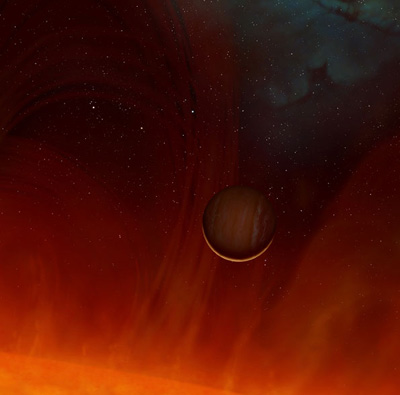This article is more than 1 year old
Astronomers detect red giant survivor planet
10 billion years old
Italian astronomers have detected a planet that survived the red giant expansion of its home star. The researchers say that the discovery could be a sneak peek at the fate that awaits the Earth, some four or five billion years from now.

The surviving planet was discovered by an international team of more than twenty astronomers, headed by Roberto Silvotti, researcher at the INAF-Osservatorio Astronomico di Capodimonte.
In the last five years, there has been a veritable explosion (no pun intended) in the number of extra-solar planets we have discovered. But at an age of roughly 10 billion years, V 391 Pegasi b is by far the oldest, and the first to be seen orbiting a post-red-giant star.
The red giant phase of stellar evolution takes place when a sun-like star has exhausted all its hydrogen. The star then expands massively, swelling to a size that would easily engulf the inner planets in our solar system. The Earth is right on the limit of that expansion zone, and V 391 Pegasi b orbits its star slightly beyond that limit.
Silvotti explains: "As far as our planets are concerned, we expect Mercury and Venus to disappear in the sun’s envelope, whereas Mars should survive. The fate of the Earth is less clear because its position is really at the limit. All this will happen in about five billion years, when the Earth will be more or less the same age as V 391 Pegasi b, i.e. ten billion years."
The team says the discovery was almost accidental. "While we were analysing the irregularities of V 391 Pegasi’s luminosity variations with a method called timing method, we began to suspect that these irregularities might have been caused by a planet," Silvotti says.
After seven years of further observations, the team felt confident in discarding other possible interpretations of the data and saying that the star was orbited by a planet. Direct observation of an alien world is still some way off.
"Neither with the largest telescopes available today, nor with those available tomorrow," Silvotti confirms. "But the future generations of telescopes will definitely make such a thing possible."
The work is published in today's edition of the journal Nature. ®
